BREED STANDARD
“Mostly it’s about attitude. Hungry, they will be happy with salt grass. Lonesome, they will follow you around like a dog.
Mired in mud, they won’t rear and thrash like other breeds. They will ease onto one side, find new footing, and walk right out of it.
You can shoot from the saddle, too, and they will not flinch.
– Roger Pinckney / Garden and Gun / April/May 2009
Marsh Tacky Breed Standard
Temperament
- Temperament is one of the most important aspects of a Marsh Tacky. Horses should be alert but calm, levelheaded, and not prone to panic.
- Must be sure-footed in wooded and swampy lands.
- Must have the ability to calmly and effectively get out of boggy areas safely and quickly.
General Appearance and Function
- Balanced and athletic.
- Known for being “easy keepers” on forages with little supplemental feeding.
- Most have a fluid, smooth trot.
- Some are gaited.
Height
- Usual height is from 14 hands to 14.2 hands at the withers.
- Usual range in height is from 13 hands to 15 hands.
Head
- Profile of the head is usually flat or slightly concave, but becomes slightly convex from the nasal region to the top of the muzzle.
- From the front view, the head is wide between the eyes, then tapers and is finely”chiseled” or defined through the mid region, then flares back out at the region of the nostrils and tapers to a fine muzzle.
- Nostrils are fine and crescent-shaped at rest. They flare larger and more open when excited or under exertion.
- Ears are short to medium length, and most have a distinctive inward pointing notch at the tips.
- Eyes are usually large, bold and high on the head though smaller eyes are acceptable.
- Profile of the muzzle (from the side) is refined, with the top lip usually longer than the bottom lip.
Neck
- Neck is wide from the side, though it is still typical to have a slight ewe-neck.
- Neck is attached lower on the chest than most other breeds.
Withers
- Withers are pronounced and obvious, or even sharp.
Back
- Back is short and strong.
Rear
- Conformation is angled from the top of the croup to the tail base, usually a 30 degree slope, some are steeper.
- Tail is set low, so that it appears to “fall off” the croup smoothly.
- Rear end has a distinct break at the point of the hip, the line from the top of croup to point of hip is one line or curve, then it breaks and continues as a different curve from the point of the hip to the back of the gaskin.
- From the rear view, the spine is usually the top of the rear, and the muscles taper down off of this (rafter-hipped).
- From the side the hips should be long and well angled, rather than steep and short.
Front
- From the side, the chest is deep and usually accounts for about half the height of the horse.
- From the front, the chest is narrow and the legs usually point up to an “A” shape at the chest.
- Shoulder is long and has a 45 to 55 degree angle.
- From the front view, the limbs should fall straight from the shoulder to the ground.
Rear Limbs
- From the rear view, the rear limbs are usually straight or slightly inward at the hocks, then straight to the ground.
- Legs are very flexible, and at the trot the hind track can land past the front track.
- Muscling is long and tapering.
- Usually no feathering on the fetlocks.
- Feet are balanced, and of a size to fit the overall weight of the horse.
- Hooves are tough and wear well.
Chestnuts
- Chestnuts are usually small and nearly nonexistent, to larger and more obvious. The most typical are small and flat. Some horses lack rear chestnuts.
Color
- Any color is permissible, but some colors are more common than others.
- Most common colors include bay, black, grullo, dun, blue roan, and bay roan. Chestnut, red dun, and strawberry roan are also common.
- Many horses have little or no white markings on them, some have extensive white on the legs and heads.
